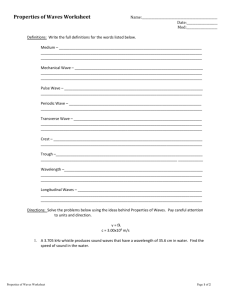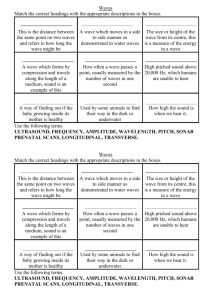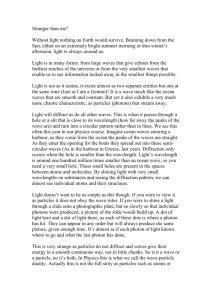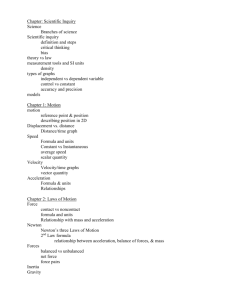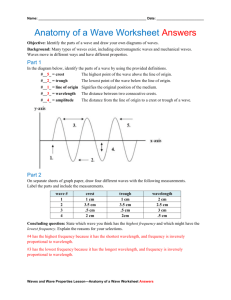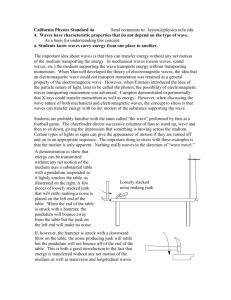TAP 311- 2: Using the wave equation
advertisement
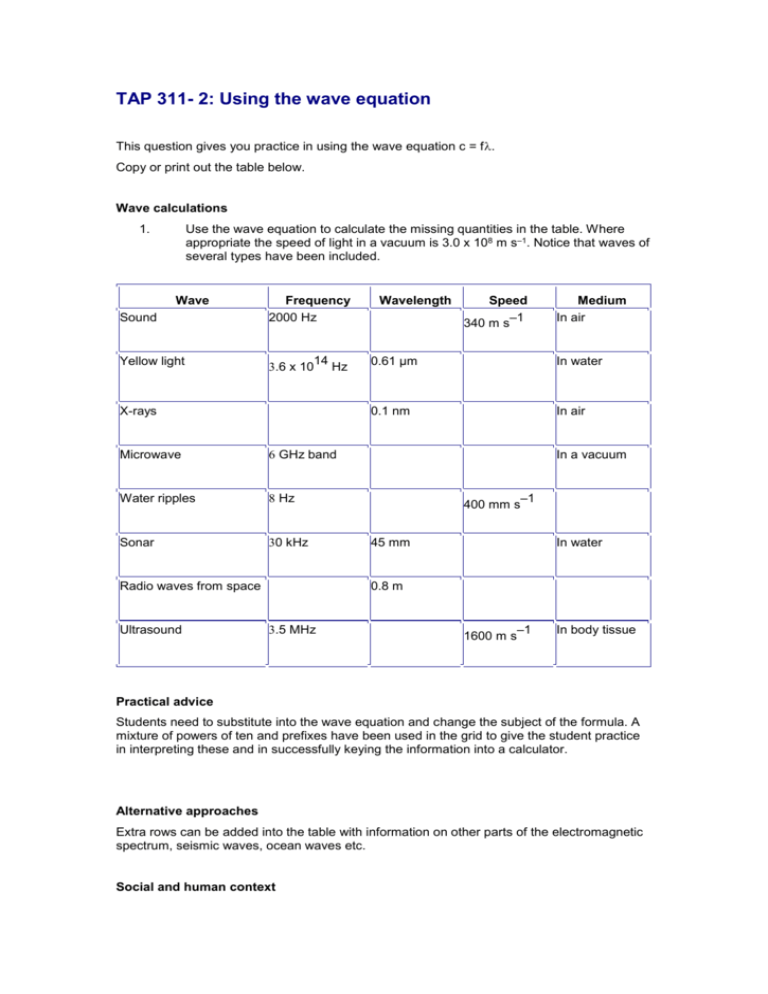
TAP 311- 2: Using the wave equation This question gives you practice in using the wave equation c = f. Copy or print out the table below. Wave calculations 1. Use the wave equation to calculate the missing quantities in the table. Where appropriate the speed of light in a vacuum is 3.0 x 108 m s–1. Notice that waves of several types have been included. Wave Sound Frequency 2000 Hz Yellow light 14 3.6 x 10 Hz X-rays Microwave 6 GHz band Water ripples 8 Hz Sonar 30 kHz Radio waves from space Ultrasound Wavelength Speed –1 340 m s Medium In air 0.61 μm In water 0.1 nm In air In a vacuum 400 mm s –1 45 mm In water 0.8 m 3.5 MHz 1600 m s –1 In body tissue Practical advice Students need to substitute into the wave equation and change the subject of the formula. A mixture of powers of ten and prefixes have been used in the grid to give the student practice in interpreting these and in successfully keying the information into a calculator. Alternative approaches Extra rows can be added into the table with information on other parts of the electromagnetic spectrum, seismic waves, ocean waves etc. Social and human context Waves of a great variety are important in different areas of life, from ocean waves including rollers on which to surf to microwaves for cooking. Answer and worked solutions Wave Frequency Wavelength Speed and media –1 Sound 2000 Hz 0.17 m Yellow light 14 3.6 10 Hz 8 –1 –6 in water 0.61 10 m 2.2 10 m s X-rays –18 3 10 Hz 0.1 nm 8 –1 3.0 10 m s in air Microwave 6 GHz 0.05 m 8 –1 3.0 10 m s in space Water waves 8 Hz 50 mm 400 mm s Sonar 30 kHz 45 mm 1350 m s Radio waves from space 375 kHz (2) 0.8 m 8 –1 3.0 10 m s in space Ultrasound 0.46 mm 1600 m s 3.5 MHz External reference This activity is taken from Advancing Physics chapter 3, 90S 340 m s in air –1 –1 –1 on water in water in body tissue



